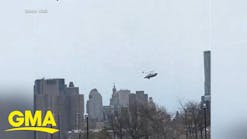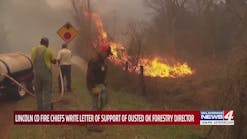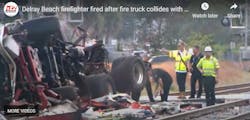At the core of a successful fire company lays the efforts of the training division and training officer. This position, though sometimes an afterthought for most departments, sets the stage for successful outcomes at responses, events, and other public interaction within the community that is served. That being said, there are a significant amount of responsibilities that are part of the training division’s mission statement and a few of the major points will be discussed here. This article will also identify some more common and easily performed training drills for any department to utilize, no matter the size or the staffing.
The first question needs to be addressed: Why the training officer and training division? Simply put, this is a vital necessity of any fire company, from both a legal position and a service position. The Insurance Services Office (ISO) utilizes a Fire Suppression Rating Schedule (FSRS) which aids in determining the prevention and suppression capabilities that protect communities and fire protection areas. This schedule measures the elements of said community’s fire protection capabilities and gives it a numerical grade that is referenced as a Public Protection Classification (PPC), usually ranging from 1 to 9, with the lower numerical grade being the best numerical grade. A considerable majority of the grading comes from the fire department and the water supply available within the community. Where the fire department is considered, a large portion of the overall grade is focused on department training (see Photo 1). Department training is broken down into multiple categories, which include:
- Training facilities available to the department (see Photo 2);
- Training capabilities at fire stations;
- Fire Officer training and certification;
- Firefighter training and certification;
- Driver/operator training and certification;
- Hazardous materials response training and certification;
- Recruit training for entry-level firefighters;
- Building familiarization and pre-planning activities; and
- Continuing education programs (total annual training hours) for the above-mentioned disciplines.
If your department has taken part in an ISO interview and inspection, the results can be reviewed and a clear picture can be determined as to the capabilities and the limitations that the department can provide, and where there is room for improvement. The training officer/division is responsible to review the shortcomings of the department and develop methods to improve the capabilities of each member of the department.
Company officer training responsibilities
Most departments do not have the adequate staffing required to provide a training officer on every shift for every company. Most departments have a handful of training officers who have to handle the delivery, development and logistical needs of department training, which can be overwhelming to a limited staff. Volunteer departments have to find creative scheduling solutions to facilitate member’s availability, and some career departments have training officers assigned to a shift, making it difficult to participate with every shifts training needs. This is why the company officer must be involved in the company-level training.
Once a recruit finishes entry-level firefighter training, they enter the department to serve as a member with limited skills of a company. While the entry-level training is almost 200 hours in some cases, it only scratches the surface of what makes up an efficient, well-trained firefighter. It is up to the company officer to provide the direction and the knowledge, skills and abilities necessary to continue the education of the company member (see Photo 3). The opportunities for the company officer here are significant because they hold the potential for the future of the fire service. Additionally, it provides a platform for the company officer to improve on their own personal skill set, and to get a clear picture of the capabilities of the company.
How to deliver the training
For efficiency on the fireground, efficiency has to start on the training ground. It should go without saying, but the company officer sets the tone for efficiency; he or she must possess the basic skills and abilities for the topic to be covered, or put someone who is in the position to deliver the materials. Next, where exactly are the training grounds? Take into account that training can be enhanced just by changing the location of the drill; all training does not have to take place in the training room. Table-top training discussions can take place at the firehouse kitchen table, skill sets can be practiced on the apparatus floor, water supply skills can be at a hydrant off the road in a quiet section of the community and extrication skills can be accomplished at the local towing/wrecking yard. The point here is this: while the materials to be covered need to be formulated and documented, it takes logistics, materials, and the right setting for a successful training outcome. Here are a few examples for training that utilizes various locations without a lot of logistical needs:
Apparatus spotting: This can be performed as a standalone training session or as part of an initial apparatus operator qualification evaluation. Officers choose from a variety of locations around the community that include residential, commercial and high-hazard response locations (see Photo 4). Apparatus operators are informed when they will be arriving (first-due, second-due, etc...), and are to position the apparatus based upon the operations the apparatus will be performing. Do not limit the training location to only the company’s first-due area because alarm volume or mutual aid assignments mean anyone can arrive at any time to any incident.
Building construction: The topic of building construction is of paramount importance, and the delivery can be enhanced by taking a tour of new construction in the response area. If possible, a tour of various types of construction methods should be identified and reviewed, and the tour should include various stages of construction and types of materials used in construction, if available (see Photo 5). Additionally, existing structures that show signs of neglect and potential collapse can be identified during this tour. In a college building construction class I was teaching, students were told to travel to their first-due area with a camera and look for signs of potential trouble within a building, and the results were quite surprising (see Photo 6).
Pump/drafting operations: Not every community is serviced by a municipal water supply. Additionally, multiple alarm assignments may require apparatus operators to establish a water supply from a static source (see Photo 7). Fire flow calculations are critical to BTU absorption, and the pump operator should be able to calculate pump discharge pressure for the size and length of hoselines carried upon the apparatus. Officers can give the operators scenarios to determine needed fire flow and then set discharge pressures accordingly. This also can be utilized as a standalone training session, or used as a qualification tool for operators to perform during certification.
Conclusion
When a community member calls 9-1-1 to report an emergency, they do so with the belief that a company of well-trained, efficient and professional firefighters are going to arrive and handle the emergency on scene. This becomes the true test of the capabilities of the crew members; not the practical skills checklist, not the multiple choice certification exam, the real passing grade comes from the results that the company achieves while handling the emergency at hand. This is a direct reflection of the training that the training officer and the company officer have provided.
The goal is a perfect score, not just passing at a minimum level. So take a look at the results of your last few alarms and gauge how things went, and be open to some continuing education time honing the skills of the company members. Next time we will discuss some additional training sessions that represent some realistic on-scene conditions with little to no logistical support needed.
Until next time, stay focused and stay safe.






